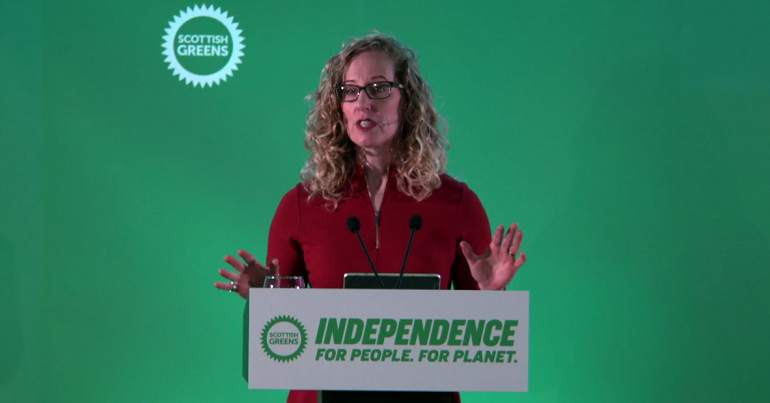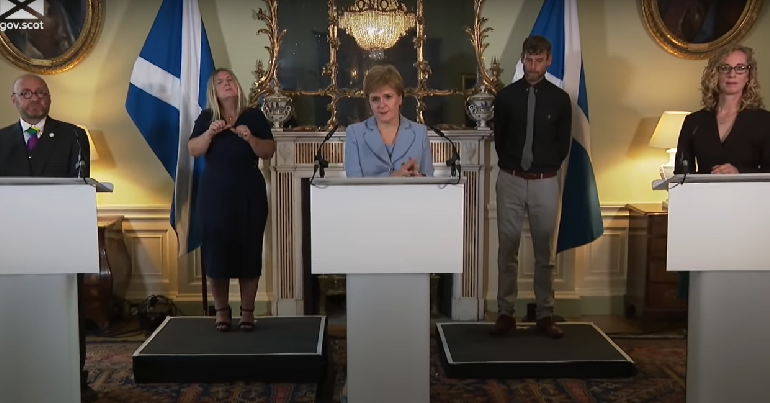Why the 2016 elections will be vital for Greens (and why I’m hoping Sian Berry is London Mayor candidate)

Thursday the 5th of May 2016 will be quite the democracy-fest. It’s the first time ever that all of the devolved parliaments and assemblies of the UK are elected on the same day: London, Scotland, Wales and Northern Ireland. By chance, both Bristol and Liverpool will elect their Mayors on the same day too – which, after London and before Devo-Manc is a reality, are the next biggest mayoralties in the country.
Each of these elections is interesting in its own right in general and for Greens in particular, and I’m sure there will be much discussion about all of them over the next 12 months. But it’s worth looking at an overall trend. After all, they are likely to be treated together by the national press to at least some extent, and my sense is that, if the Green parties play their cards right, they may be able to generate a significant sense of momentum from these votes.
In particular, a moribund and introspective Labour party will no longer have a first part the post system to fall back on when hoping for support from left leaning voters and look likely to lurch to the right and further from their base. Meanwhile, the vanishing Lib Dems will probably be crying in a corner. Greens on the other hand will have had time for the members who joined during the surge to bed in and get trained and organised – something which hadn’t quite happened by the general election in much of the country.
In Scotland, it seems almost inevitable that the SNP will remain as the government. Indeed, we can probably expect them to take a few more seats. Beyond that, it looks like another reasonably significant change might be afoot. Whilst opinion polls have varied slightly, and have historically been fairly poor predictors of Holyrood results when conducted during Westminster elections, most have shown a significant increase in the number of Green MSPs – usually at the expense of Labour. Likewise, the vast increase in party membership in the days after the referendum, and the possibility of votes from canny SNP supporters realising that a clean sweep of constituencies would make it very hard for their party to get any additional seats on the list both point to descent chances of a big haul of Greens in the 5th Scottish Parliament.
Looking to the Welsh Assembly, polling is less frequent and has suffered as in Scotland from living in the shadow of the UK election. However, the most recent polls before the general election period kicked in (and attentions shifted to Westminster) showed Greens in Wales on a 7-8% share which, if it landed the right way, could mean the Welsh Greens winning their first one or two Welsh Assembly elections. Perhaps just as interestingly, Plaid Cymru ran a strong campaign this month, with the previously under-threat Leanne Wood emerging stronger and more popular than ever. Repeat this, and they could be looking at advancing in this election, adding to a broader narrative of parties to the left of Labour on the rise.
The Northern Irish Assembly looks positive for Greens too. The election uses the proportional Single Transferable Vote system and the GPNI currently have one Assembly Member. In the UK election they managed to save two deposits, meaning they achieved almost as many votes under First Past the Post in North Down and South Belfast as they will need first preferences in the proportional election next year in order to retain their one seat and add a second.
In Belfast East, the most hotly contested constituency in the province, local councillor Ross Brown managed 2.7%, beating both Sinn Fein and the SDLP in a race where most Green supporters will surely have been temped to tactically vote to save Alliance’s Naomi Long from the DUP. Ross is the candidate in the seat again next year, and again must have a good chance. If Greens do manage to win three Northern Irish Assembly Members, this will establish them as a notable force in a place where their future facing cross-community politics is desperately needed.
In both Bristol and Liverpool, Greens had two of their best constituency results of the election, winning second places in their respective target seats and, with Bristol Greens, picked up a string of new councillors. Whilst the Bristol party will be up against an independent Mayor with whom they have collaborated and whom they may struggle to challenge, coming second in Liverpool, with the right campaign, seems perfectly plausible: Greens were runners up across the city in the 2014 local elections.
And then there’s the London election. It seems to me that if the Green party finds the right candidate and mobilises its supporters creatively, it has a huge opportunity here. In the 2012 election, Greens had 1,200 or so members in the capital. Today, that figure is approaching 12,000. An inspiring and energetic Green candidate who can reach beyond party loyalties and mobilise supporters creatively seems to me to have an excellent chance of electrifying the campaign: it’s worth remembering that Alex Tsipras’ 2006 run for Athens Mayor was a vital stepping stone on their path from 3% to government.
For me, there’s a clear choice for who that candidate should be. When Sian Berry ran in 2008, London Greens had only 800 or so members. Yet she managed to become the only Green ever to secure the endorsements of national newspapers – with both the Independent and the Observer saying they would give her their first preference. She ran exactly the kind of creative campaign that is needed, and took the party from seventh place to fourth, increasing the vote by 20,000 in the face of an almighty Ken/Boris squeeze.
Sian is a superb communicator, managing to make radical ideas sound like the common sense they are in our absurd world, and brings the energy of London’s social movements together with the head for detail needed in her role as a councillor in Camden and professional transport campaigner. I’m very pleased that she’s announced today that she is standing to be Green candidate for London Mayor, and hope very much that she is selected.
The 2015 membership surge came a little too late to transform the performance of Greens in the Westminster election. But in 2016, the Green parties across the UK will face their most important elections in the political cycle: the ones which have historically delivered the party a majority of its full time politicians. Liberated from First Past the Post, with a membership and a profile like never before and the only left leaning party in England which is on the rise, this is an opportunity for Greens to give ourselves a significant boost. As the 2014 Euro elections were to UKIP, so the 2016 elections could be to the Greens.
To channel this energy, the party will have to appear to be fresh-legged yet credible, exciting yet solid, energetic, and going places. It will have to look like it is the future. In particular, because of the absurdities of the British media, a candidate for London Mayor capable of opening the race up and running the party at full throttle will be vital not just in the capital, but all across the country.
And with the momentum that a good set of results in Scotland, Wales, Northern Ireland, London, Liverpool and Bristol could bring, the next conversation we’ll need to have will be about by-elections…




What I don’t get from this article is why Sian and not Caroline Russell or Tom Chance who have also put themselves forward.
Hi! we have just published a news item on all three, and will be running longer pieces by each candidate in the very near future. Watch this space!
Love Sian and joined the party when she was leader but she does fit the middle-class Green Stereotype we are criticised for.
While a good article in general, I think the assumption “the Liberal Democrats will be crying in a corner” seems misguided. They are a much older party then ours (treating the Liberal party as their forerunners) and have had many disappointments too. They have always come back, and hard. So while the future is bright for us, we can’t discount them, they still have a much greater local representation and know how to fight out of that corner you mentioned.
I presume there’ll be a process of primaries?
The Green Party did very well across London in the recent General Election: a number of candidates performed very strongly, not least Natalie Bennett and Amelia Womack, who have the added advantage of a high profile too. Statistically at least, Heather Finlay would seem to be the strongest candidate: 14.6% vote-share (7,281 votes)
Nominations open June 1st to 30th. Voting in August.
I’m worried all these new Greens are going to pretty disappointed to learn the rules make it basically impossible for anyone who joined less than two years ago to get selected in London elections.
Why would we be disappointed to learn we can’t run for election? One doesn’t join a party in order to lead it, but rather to contribute. The 2 year rule is more than reasonable, especially as it leaves a side door open for long term members that were lapsed in the past 48 months and therefore don’t naturally qualify.
Green Surge’s place right now is to bring our enthusiasm and support to experienced campaigners, while learning how to step up in the future.